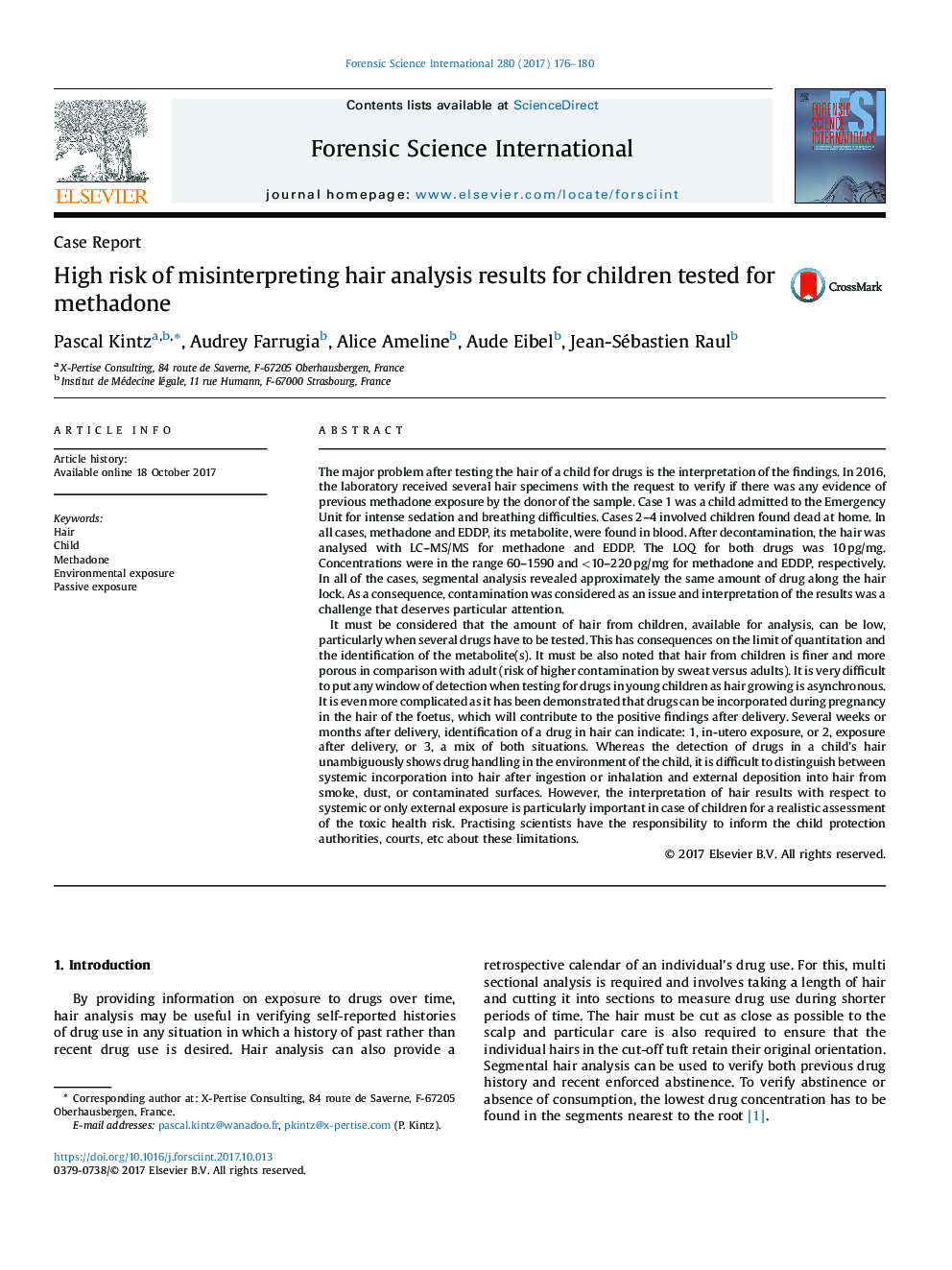| Article ID | Journal | Published Year | Pages | File Type |
|---|---|---|---|---|
| 6551518 | Forensic Science International | 2017 | 5 Pages |
Abstract
It must be considered that the amount of hair from children, available for analysis, can be low, particularly when several drugs have to be tested. This has consequences on the limit of quantitation and the identification of the metabolite(s). It must be also noted that hair from children is finer and more porous in comparison with adult (risk of higher contamination by sweat versus adults). It is very difficult to put any window of detection when testing for drugs in young children as hair growing is asynchronous. It is even more complicated as it has been demonstrated that drugs can be incorporated during pregnancy in the hair of the foetus, which will contribute to the positive findings after delivery. Several weeks or months after delivery, identification of a drug in hair can indicate: 1, in-utero exposure, or 2, exposure after delivery, or 3, a mix of both situations. Whereas the detection of drugs in a child's hair unambiguously shows drug handling in the environment of the child, it is difficult to distinguish between systemic incorporation into hair after ingestion or inhalation and external deposition into hair from smoke, dust, or contaminated surfaces. However, the interpretation of hair results with respect to systemic or only external exposure is particularly important in case of children for a realistic assessment of the toxic health risk. Practising scientists have the responsibility to inform the child protection authorities, courts, etc about these limitations.
Related Topics
Physical Sciences and Engineering
Chemistry
Analytical Chemistry
Authors
Pascal Kintz, Audrey Farrugia, Alice Ameline, Aude Eibel, Jean-Sébastien Raul,
